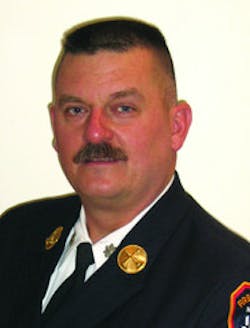Fire department foam operations are not the most exciting tactics that we conduct. In addition to that, they can be difficult and a bit technical. What this often results in is engine companies that don’t really ever train on foam operations and, therefore, cannot get a foam line into operation when it is needed. This is a problem. Although foam operations are few and far between, when a situation requires a foam handline, that line is the only thing that will handle the problem. With this in mind, let’s take a look at the elements of a basic engine company foam handline operation.
Producing foam
There are several different types of foam that fire companies commonly use, including aqueous film-forming foam (AFFF), protein, alcohol-resistant and high-expansion foam. This article will focus on the types of foam that are applied with a hoseline.
There are several ways of combining or mixing the foam concentrate with water to produce the finished foam. Each of these methods has advantages and disadvantages and requires a wide variety of equipment.
Some of the more modern apparatus have a built-in foam concentrate reservoir that will inject the proper amount of concentrate into the stream as it goes through the pump. No other equipment or devices are required other than the foam nozzle. This system is simple but needs to be maintained and cleaned thoroughly after each use. Systems that are not maintained will often not work properly and result in poor or ineffective foam streams.
Departments that don’t have apparatus equipped with an onboard foam system rely on five-gallon cans of foam concentrate typically carried in small quantities somewhere on the apparatus. When a foam handline is needed, the foam concentrate is poured into the booster tank (aka batch mixing) to create the desired mixture. The handline is stretched and charged with a foam nozzle attached. After flowing some water, the foam mixture begins to flow through the foam nozzle, and finished foam is produced.
Another technique for using five-gallon cans of concentrate is to connect a foam eductor into the handline and insert it into the can of concentrate. Depending on the type of eductor, it can be connected to the pump outlet or inline between lengths. This puts the can of concentrate and the eductor in close proximity to the pump panel where it can be managed by the pump operator.
Foam application
For large, flammable liquid fires, you must assemble enough foam concentrate to make a good knockdown. It is wasteful to begin a foam operation with an insufficient amount of foam concentrate. The foam will knock down or diminish the fire, but after the foam runs out, the fire will burn back and destroy the foam that was applied and continue to grow.
When starting operations with a foam hoseline, you need to expect plain water to flow from the nozzle until the foam/water mixture begins to flow. It takes a short time for the eductor to begin to operate and inject concentrate into the flowing fire stream. If plain water is applied to burning flammable liquids, it can cause the flammable liquid to splash, causing the fire to spread and intensify. The line needs to be kept open and directed off to the side, away from the fire until finished foam can be seen flowing from the nozzle.
Remember that foam is not just for flammable liquid fires. Even if all obvious ignition sources have been eliminated, spilled flammable liquids that have not yet ignited should, in most cases, be covered with foam immediately to prevent the release of flammable vapors that can travel long distances from the spill and find an ignition source.
The application method of finished foam is as critical to its effectiveness as its contents and mixture. When applied via a hoseline, finished foam is generally applied so that the foam falls from above and lands gently onto the surface. Remember that we are trying to apply the foam to the surface of the flammable liquid so that it creates a blanket on the surface of the liquid and prevents the further release of flammable vapors while cooling the fuel and suppressing the surface fire. If the foam stream is directed into the burning fuel, it will splash the flammable liquid causing the release of more flammable vapors, which in turn will create more fire.
Start training
Fire department foam hoselines are basic operations, but they do require knowledge of more than just a few issues. If you haven’t trained on foam recently, it’s time to pull out all the equipment and get at it.
About the Author
John J. Salka Jr.
Battalion Chief
JOHN J. SALKA JR., who is a Firehouse contributing editor, retired as a battalion chief with FDNY, serving as commander of the 18th battalion in the Bronx. Salka has instructed at several FDNY training programs, including the department’s Probationary Firefighters School, Captains Management Program and Battalion Chiefs Command Course. He conducts training programs at national and local conferences and has been recognized for his firefighter survival course, “Get Out Alive.” Salka co-authored the FDNY Engine Company Operations manual and wrote the book "First In, Last Out–Leadership Lessons From the New York Fire Department." He also operates Fire Command Training, which is a New York-based fire service training and consulting firm.

